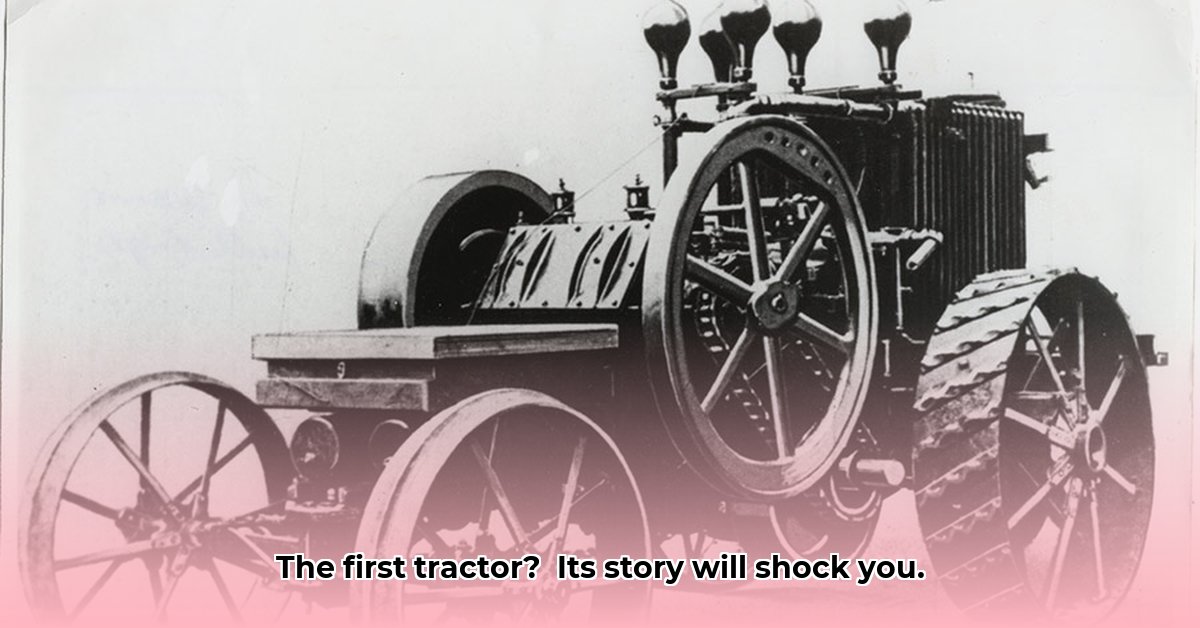
Before the roar of engines and the rumble of wheels dominated agricultural landscapes, farming was a vastly different endeavor. Imagine a world of backbreaking labor, slow-moving oxen, and meager harvests dictated by unpredictable weather and human limitations. The sheer physical effort required to cultivate even small plots of land meant yields were often low, and a bad harvest could spell financial ruin for entire families. The need for a faster, more efficient method of farming was, quite simply, a matter of survival. For more detail on the invention timeline, check out this helpful resource: Tractor invention history. This is the story of how that need led to the invention of the first tractor.
The Dawn of Mechanization: From Animal Power to Iron Horses
For centuries, agriculture relied on the strength of animals—oxen, horses, mules—their power dictating the pace of farming. Planting, tilling, and harvesting were all intensely manual processes. This laborious system inherently limited the amount of land a farmer could manage, directly impacting productivity and potential yields. The limitations were stark: a farmer's success hung precariously on the balance of human and animal strength against the whims of nature. Was there a better way? The quest for increased efficiency and reduced human toil fueled the drive for innovation.
Early Attempts and the Steam-Powered Pioneers
The concept of self-propelled farm machinery wasn't a sudden revelation; early inventors grappled with the challenge well before the 20th century. The early attempts, however, primarily focused on steam power. These steam-powered tractors were impressive in their scale, true marvels of engineering, but they were also incredibly cumbersome and impractical. Their massive size, significant weight, and exorbitant fuel consumption made them unsuitable for most farmers. They were, essentially, stationary engines that were extremely difficult to move. These early experiments highlighted the need for a more efficient and practical power source. A true revolution wouldn't come until a different kind of power emerged.
The Internal Combustion Engine: A Revolutionary Power Source
The advent and refinement of the internal combustion engine proved to be the pivotal development. This compact, powerful, and remarkably more efficient energy source provided the foundation for a dramatic shift in agricultural machinery. While precisely identifying the very first commercially successful tractor is difficult—several inventors were simultaneously developing similar designs—the early 1900s witnessed a surge in innovation. These early tractors, while simpler and less refined than their modern counterparts, represented a monumental step forward. They offered a glimpse into a mechanized future that would transform agriculture forever. How did these early machines change the world?
The Impact of the First Tractors: A Paradigm Shift in Agriculture
The introduction of the first commercially viable tractors marked a watershed moment in agricultural history. Despite their inherent limitations, these machines dramatically increased efficiency. Farmers could now cultivate far larger areas of land in a fraction of the time previously required. Planting and harvesting became significantly faster and more productive, leading to substantially increased yields. This had a ripple effect: more abundant food supplies, lower food prices, and the capacity to support a growing global population. This was more than just an improvement; it was the beginning of a complete transformation. Did this change the social fabric as well?
From Humble Beginnings to Modern Marvels: The Evolution of the Tractor
The initial tractors were far from perfect; they were rudimentary, prone to breakdowns, and demanded significant maintenance. Yet, they catalyzed a wave of innovation. Engineers and designers embarked on a continuous process of refinement, improving engine performance, durability, and ease of use. Tractors steadily became smaller, more maneuverable, and significantly more powerful. The evolution was a race against time, driven by the constant demand for greater efficiency and productivity. This continued refinement gave rise to the technological marvels we see today.
The Enduring Legacy: Shaping the Future of Farming
Modern tractors are a testament to relentless innovation, incorporating advanced GPS guidance systems, automated controls, and precision farming techniques. They represent decades of progress, constantly evolving to enhance efficiency and sustainability. However, the legacy of the first tractors remains deeply embedded: they provided the foundational architecture for the advancements in agricultural technology that have enabled the production of food on an unprecedented scale, ensuring the sustenance of a continuously growing global population. What else will the future hold?
Key Milestones: A Simplified Timeline
| Year | Major Development | Significance |
|---|---|---|
| Early 1900s | Early steam-powered tractors | Impressive but impractical due to size, weight, and fuel consumption. |
| Around 1907 | Internal combustion engine-powered tractors emerge | Significantly more efficient and practical, paving the way for widespread adoption. |
| 1910s-1920s | Mass production and increased adoption | Transformed agricultural practices and dramatically increased food production. |
| 1930s-Present | Continuous technological advancements | Improved efficiency, power, versatility, and automation. |
The story of the first tractor is a compelling narrative of human ingenuity, determination, and the ceaseless pursuit of progress. It is a story that continues to evolve, shaping the future of farming and underscoring the profound and enduring impact of a single, revolutionary invention.